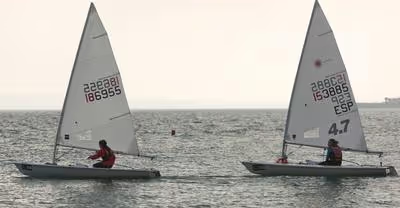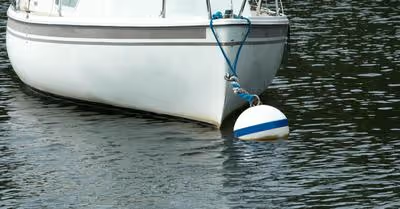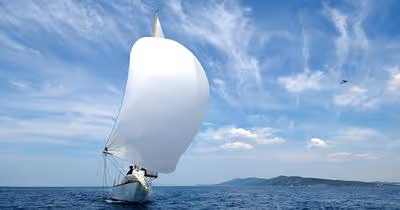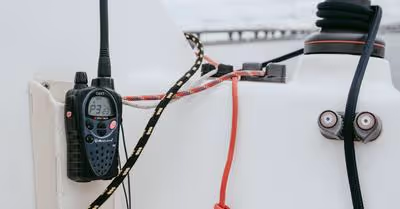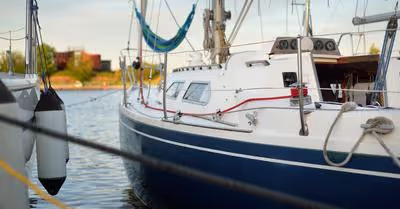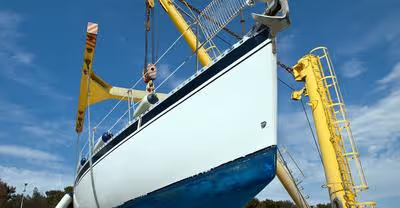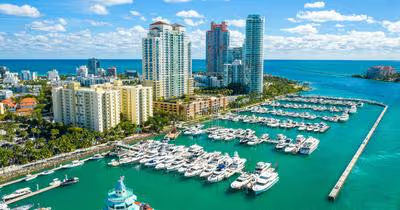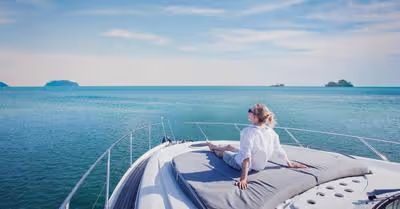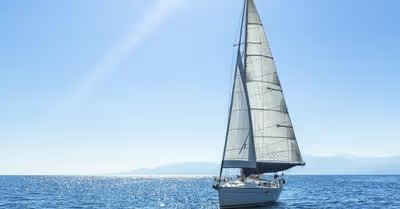Table of Contents
Alternatives to Anchoring
The two most popular alternatives to anchoring are sea anchors and storm drogues. A sea anchor is a piece of fabric that is shaped like a cone. Sea anchors are dragged from the bows. Then, we have storm drogues. A storm drogue is a collection of fabric cones that you drag from the stern. Other names for these anchoring alternatives are drift sock, sea break, and parachute anchors.
Sea Anchors
The purpose of using a sea anchor is to stop the drift of a vessel while keeping the bow windward, and into the waves. This anchoring alternative is released off the bow. It is used in situations where ground tackle isn't possible, and you need to hold your position in high seas and winds.
They are mostly used when there is a storm or a power outage. It protects the boat from turning towards the storm or getting stuck in shoals. As discussed above, their shape is like that of a cone, and they are bigger than storm drogues.
Drogues
Unlike sea anchors, storm drogues are used to slow down a vessel rather than stopping it altogether. A drogue keeps your vessel stern to the waves while minimizing the likelihood of pitchpoling or broaching.
Storm rogues can also provide steering assistance in the face of rudder or power problems. They are mostly used by fishermen when catching fish, as it keeps the boat floating slowly rather than stopping or floating away. Just like sea anchors, their shape is cone-like, and they are smaller in size.
Heaving To
Unlike drogues and sea anchors, "heaving to" isn't an anchoring tool, but a technique. This technique comes in handy when the weather is foul, or when rest is required. All you have to do is to backwind the forward sail while locking the rudder toward the direction of the wind.
As a result, the vessel will ride at an angle of 45 degrees, into the waves and the winds. Depending upon the wind's intensity, you can also use a reefed main. "Heaving to" seems complex at first, but it gets easier with practice.
Areas Not to Anchor Your Boat
Besides the center of the ocean, here are some other places where you shouldn’t anchor your boat.
Restricted Spots
Take the Bahamas for example. It is easy to anchor your boat across the Bahamas, except for some restricted areas. What are these restricted areas? All areas where the coral reef is vulnerable are restricted for anchoring. Similarly, places with endangered animal species are off-limits when it comes to anchoring. Moreover, you aren't allowed to anchor at private marinas, even if you are staying there and paying for a mooring ball. Furthermore, you cannot anchor outside the islands during bird nesting seasons.
Unprotected Waters
As we have already discussed, the purpose of an anchor is to hold the vessel in place so it doesn’t move. However, sometimes, due to rough weather conditions, the anchor fails to do its job. While stormy weather can move a boat, it can also shake up the anchor, thus defeating its purpose.
The constant jerking can break the rod or the chain connecting the boat to the anchor. There have been times when boats have drifted into unknown areas after getting detached from their anchors. Never make the mistake of anchoring in unprotected waters where the weather is volatile and the surveillance is minimal.
Too Close to Other Vessels
This one is a bit tricky. Sometimes, we tend to park our boats and anchor them too close to other boats. There is nothing wrong with this as long as you are certain that there is sufficient room for the two vessels to swing around freely. Before anchoring too close to another boat, make sure your boat can do a 360-degree spin without colliding with the other boat.
Areas with Risk of Theft
Parking your boat in a marina is the safest option because of the enhanced security and the lesser likelihood of criminal activities. On the flip side, anchoring your boat overnight in an unknown area makes you vulnerable to thieves. Once your boat is anchored without any protection, anyone with a boat can come over and rob you.
Some Anchoring Exceptions
By now, you must have understood why it is not a good idea to drop the hook in the middle of the ocean. However, there are some exceptional areas. Towards the south of Tonga and Fiji in the Pacific Ocean, two submerged atolls exist, known as the Minerva Reefs.
When sailing in this area during the high tide season, it is impossible to see any piece of land. Anchoring in the middle is scary at first, but overall, it is an amazing experience. Another safe place for anchoring is the Bahamas Bank. It is right between the Bahamas Islands. It is a common practice among sailors to anchor right in the middle of the night, during calm weather.
Anchoring in the middle of the ocean is not at all advised. While some areas are safe, in most areas, you need enormous amounts of line. Deploying and retrieving such lengths of anchoring lines or chains is extremely difficult. If you must drop the anchor, you should either go for the storm drogue or the sea anchor, as discussed above.
Recent Articles



